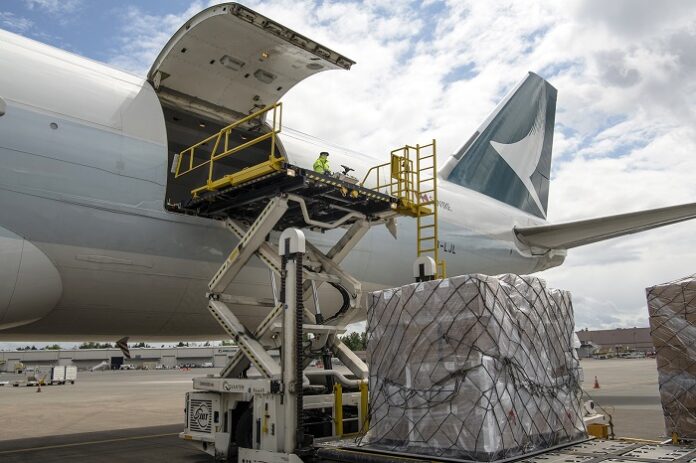
-
Average general cargo air freight rate on Europe-US trade fell 14% y-o-y to US$4.18/kg on January 15 amid cargo capacity rebound
-
Belly capacity on the East Asia-Europe trade lags the pre-pandemic levels, but the $6.40 average air freight rate is down 29% y-o-y
-
Europe-East Asia air freight rate on the backhaul was $3.76 on January 15, up 13% y-o-y and 56% above the 2019 level
An uneven rally cut airfreight rates on the big fronthaul trades in January 2023 as the Covid-19 pandemic slowly eases its grip on the global air freight market, according to Xeneta, an Oslo-based container market index and analytics provider.
In her industry update blog on January 20, 2023, airline analyst Wenwen Zhang says the average general cargo air freight rate from Europe to the US fell 14% year on year to US$4.18 per kg on January 15, as cargo capacity rebounded from belly hold on passenger flights.
But Zhang said the air freight rate is 72% above the 2019 pre-pandemic level due to higher operating expenses, including labor and jet fuel costs, while both supply and demand levels are above their pre-pandemic averages.
She said capacity on the backhaul is sufficient, keeping rates below the pandemic peak seen elsewhere. The average air rate was $2.08, just 4% y-o-y below last year’s level.
RELATED READ: Airfreight volumes rates up despite diminished capacity
Belly capacity on the East Asia-Europe (including China, Japan and South Korea) trade remains much lower than before the pandemic, compared with the transatlantic corridor, where belly capacity has fully recovered, Zhang said.
On January 15, the average air freight rate from East Asia to Europe was $6.40, down 29% y-o-y despite the slow supply recovery. Xeneta said this was due, firstly, to the weakened European demand after an unusually strong peak in 2021.
Xeneta ruled out in November 2022 a recovery this year in the airfreight industry due to global economic and geopolitical issues.
Secondly, a part of the 2021 peak volume has been gradually shifting from the air back to ocean transportation as seafreight rates have collapsed, and the schedule reliability of the service networks has improved.
Xeneta said despite the year-on-year drop in freight rate, the East Asia-Europe rate remained 62% above pre-pandemic levels as jet fuel costs nearly doubled, operational costs increased due to the closure of Russian airspace and constrained passenger belly capacity, especially from China.
On the backhaul, the Europe-East Asia air freight rate was $3.76 on January 15, up 13% y-o-y and an eye-catching 56% from the 2019 level.
The East Asia-US average general air freight rate was $8.39 on January 15, substantially down 37% y-o-y, but well above the pre-pandemic $4.52, due to slow recovery of belly capacity and high jet fuel costs. On the backhaul, the rate was $2.44. Following the trend on its fronthaul, the rate dipped 23% y-o-y back to its pre-pandemic level.
Zhang said air freight rates have been more spread out from their average levels since the onset of the pandemic, a sign that freight sellers have increased power to set rates and choose customers. This is especially observed on the fronthaul lanes – transatlantic westbound, Asia-Europe and the transpacific eastbound trades.
With falling air freight demand and recovering capacity, the spread of air freight rates offered to shippers has been narrowing since Q4 2022, showing that freight buyers are gradually regaining their market power, the analyst said.
Xeneta launched air freight benchmarking for temperature-controlled (TC) transports in April 2022. From the US to Europe, the average air freight rate for TC goods was $4.72 last December, Xeneta said.
Due to weak demand, the passive TC rate declined 5% from the September level, but it was more resistant than the general cargo rate, which dropped 16%.
For the Europe-East Asia market, the average TC air freight rate stood at $6.00 in December. This is the only trade with a rate increase, up 6% from September. This left TC cargo $1.61 more expensive than general cargo, whereas, in September, the delta was only $1.08.
In December, the US-East Asia TC rate was $5.24, down 12% from a quarter ago, while the decline seen on the general cargo side was nearly triple this number.
With shipper rates into January 2023 staying at the December rate levels, combining this with Xeneta’s airline market data should keep the TC rates more resistant than general cargo to the market downturn this quarter, Zhang said.




